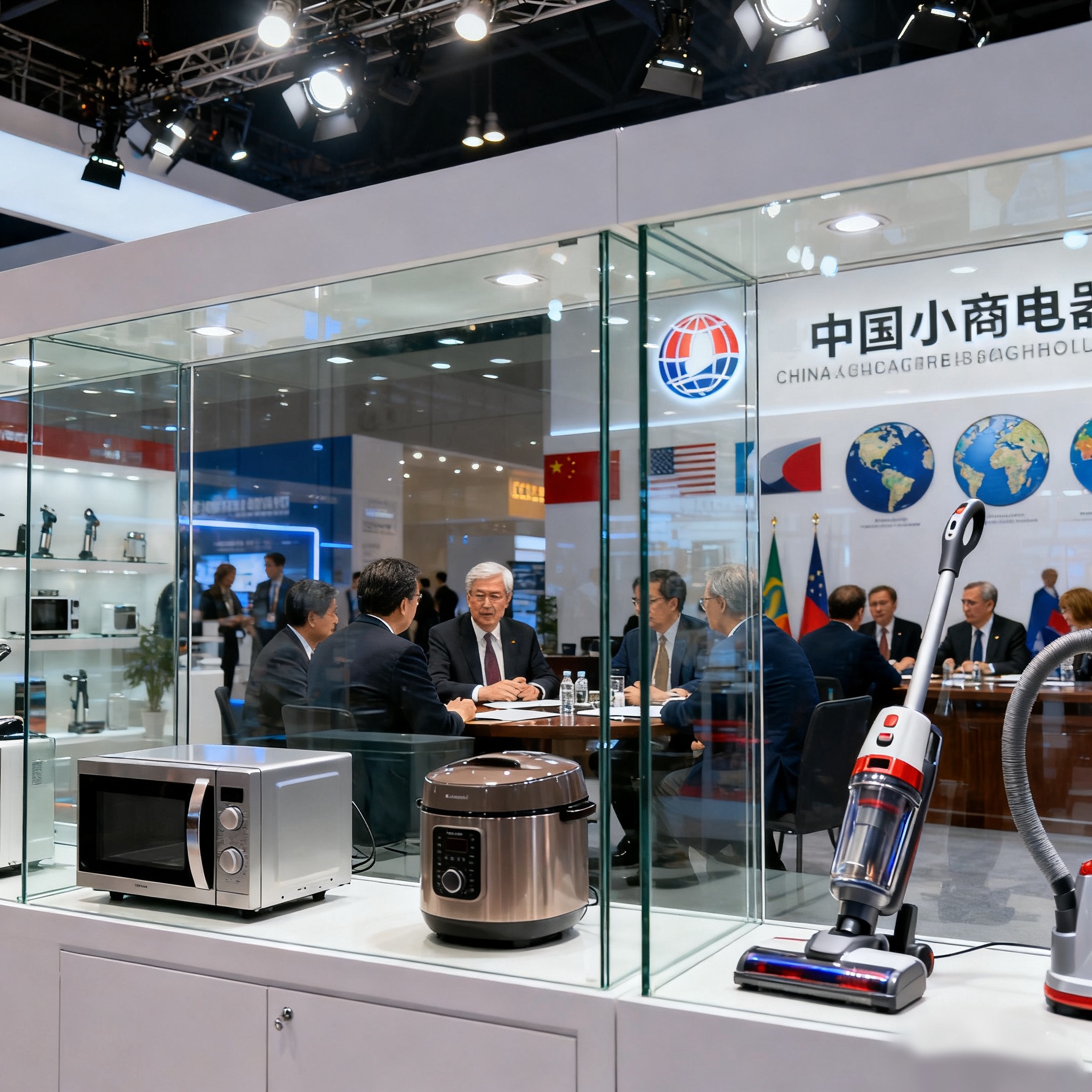
China's Small Household Appliance Industry Amid Tariff Fluctuations: An Anchor in the Global Supply Chain
“Despite continuous fluctuations in U.S. tariff policies over the past six months, Chinese small household appliance exporters have demonstrated remarkable resilience. Although some companies have considered relocating production capacity overseas, thorough investigations and cost evaluations have led to a growing industry consensus: China remains the world's most competitive production base for small household appliance manufacturing.”
Despite continuous fluctuations in U.S. tariff policies over the past six months, Chinese small household appliance exporters have demonstrated remarkable resilience. Although some companies have considered relocating production capacity overseas, thorough investigations and cost evaluations have led to a growing industry consensus: China remains the world's most competitive production base for small household appliance manufacturing.
I. Industrial Resilience: Dual Assurance from Cost Advantages and a Complete Industrial Chain
Since the second half of 2024, facing tariff changes, China's small household appliance companies have undergone a shift from "anxious overseas expansion" to "rational planning."
The experience of Li Mingyang, General Manager of Letu Electric Appliance, is quite representative. Half a year ago, he actively investigated factory setup conditions in Cambodia and Malaysia, but has now put such plans on hold. "The stability of Cambodia's power supply is questionable, and the monthly salary for factory workers in Malaysia has risen to 3,700-3,800 RMB. If the tariff difference between China and the U.S. isn't substantial, setting up a factory in Malaysia would actually mean losing our cost advantage," he analyzed.
Over these six months, manufacturing costs in Southeast Asia have been rising rapidly. The monthly wage for workers in Malaysia has increased by 7%-8% compared to six months ago, and factory rent has risen to $9 per square meter. Comprehensive calculations show that manufacturing costs in Malaysia are approximately 15% higher than in China. Supported by a complete industrial chain, China's small household appliance manufacturing industry maintains its leading global competitiveness.
Currently, all of Letu Electric's electric fan products are still produced in Zhongshan, Guangdong, with a significant portion exported to the United States. To address potential risks, Li Mingyang plans to visit Mexico for an investigation this month, but he is clearly aware that "inadequate industrial chain support will be the main challenge for overseas layout."
The person in charge of the North America Huafushan Industrial Park corroborated this view: "Although upstream component suppliers for China's major household appliances have the willingness to expand overseas, the local industrial chain supporting capacity in Mexico still shows a significant gap compared to China, making it difficult to fully meet the production needs of Chinese-funded enterprises in the short term."
II. Differentiated Strategies: Path Choices for Leading Enterprises and SMEs
Enterprises with lower dependence on the U.S. market show significantly less willingness to move production overseas.
A person in charge of a Shunde coffee machine export enterprise stated: "Only those companies with a high proportion of U.S. customers urgently need to set up factories overseas. Our market distribution is balanced, and the impact is limited."
Yu Xuehui, founder of Cixi Home Appliance Pavilion, provided a broader perspective: "In the export landscape of Cixi's small household appliances, the U.S. market accounts for about 15%-20%. Although tariff policies are variable, most SMEs remain in a wait-and-see stance regarding building factories overseas. Their common strategy is that if the U.S. market truly becomes unfeasible, they will develop other markets to compensate."
Data shows that among more than 3,000 home appliance enterprises in the Ningbo region, only about 20 have chosen to set up factories in Southeast Asia, accounting for less than 1%. Yu Xuehui pointed out: "These SMEs are mostly family-managed, with bosses being hands-on; remote management of overseas factories poses a significant challenge for them."
In contrast, leading enterprises in the industry, leveraging their resource advantages, have taken the lead in completing global layouts. As one of the leading small household appliance export enterprises, Xinbao Co., Ltd. has begun to see results from its production base in Indonesia. According to the company's official WeChat update on October 10th, its Indonesian Donlim Technology exported 319 containers, totaling 691,054 products, to the U.S. in August this year, with an export value of $15.6 million. The products include blenders, toasters, coffee machines, and more. The Indonesian customs bonded zone provides significant convenience for the import of raw materials and export of finished products.
The Vice President of Guangdong Hongri Technology Co., Ltd., a company specializing in coffee machine exports, analyzed from a strategic level: "In the long run, SMEs also need to consider the possibility of international operation. Tariffs are just one of many factors to consider; whether to set up factories overseas involves long-term planning and requires assessing factors like local market potential."
III. Innovation-Driven: Diversification Strategies Open New Growth Space
The latest data from the General Administration of Customs shows that from January to August 2025, the export value of Chinese kitchen small appliances like blenders, juice extractors, and toasters declined, with the drop in exports to the U.S. being one of the significant factors.
Facing a complex trade environment, home appliance export enterprises are seeking breakthroughs through product innovation and market diversification. Hu Hai revealed that among the SMEs he recently received in overseas industrial parks, some have shown a strong willingness to explore new markets.
During this critical period of transformation, it is crucial for Chinese foreign trade enterprises to expand into global markets through multiple channels. The Big Trade Data platform covers customs transaction data and statistical data from more than 230 countries and regions worldwide, providing strong support for foreign trade enterprises to accurately target potential customers and formulate optimal market strategies.
Conclusion: Despite short-term challenges, China's small household appliance industry maintains its core position in the global supply chain by virtue of its complete industrial chain, continuous technological innovation, and flexible market strategies. Balancing global layout and local advantages, Chinese enterprises are demonstrating unprecedented resilience and wisdom.













